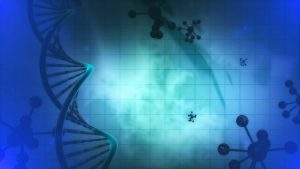What is the difference between NAD+ and NADH?
What is the difference between NAD+ and NADH?
A molecule called NAD+ has been in the public eye lately. Taking supplements that boost your levels of this molecule is promoted as an all-natural way to increase your energy levels, improve your overall health, and even turn back the clock and become younger. But what is NAD+? What does it do? Is it the same thing as NADH?
NAD+
This compound, which we will call N+ for short, is a molecule found in every cell in your body. It is an essential molecule that is involved in many different important metabolic processes. It is involved in generating energy, repairing damaged DNA, setting the circadian rhythm, and maintaining cellular homeostasis.
Levels of N+ decline in aging organisms and studies in mice and worms have shown that increasing N+ levels can lengthen their lifespan and improve the function of their mitochondria. N+ levels can be increased in organisms, including humans, by consuming various nicotinamide nucleotide compounds or nicotinamide riboside (NR). They are metabolized in the body into N+.
N+ and NADH conversions
N+ and NADH, which we will call N-, are two different versions of the same molecule called nicotinamide adenine dinucleotide (NAD). N+ is the oxidized form of the molecule while N- is the reduced form. They are interconverted constantly in the body. The base structure of both molecules is synthesized from NR or NAD consumed in the diet, but what state they exist in-oxidized or reduced-varies as they perform their roles in metabolism.
In the mitochondria, oxygen is consumed to generate ATP, the primary energy source in cells. During glycolysis, the first step in the process of turning glucose into ATP, two molecules of N+ are reduced to two molecules of N-. At a later stage in the process, the two molecules of N- are oxidized back to N+, with no net gain or loss of N+.
During anaerobic metabolism in the muscles, which occurs during short, intense bursts of effort, glycolysis occurs. Still, the process of oxidation in the mitochondria cannot continue due to a lack of oxygen. The muscles can ferment the products of glycolysis into lactic acid, producing energy during the process and recycling the N- back into N+.
Various enzymes use N+ as a co-factor, and in the process of carrying out their functions, it is reduced to N- but not directly recycled back into N+. The excess N- produced by these enzymatic reactions can be converted back into N+ by electron transport proteins in the membrane of the mitochondria.
The ratio between N- and N+
Some experts think that the ratio between N- and N+ determines the fate of each cell. The ratio is used as an indicator of the cell’s health and energy status, which in turn affects what genes are expressed. During a well-fed state, N- predominates. During fasting and stressed states, N+ predominates.
You might think that the high N- state would be preferable, but during a high N- state, the cellular repair and protection mechanisms are down-regulated, which allows damage to accumulate in the DNA, misfolded proteins to accumulate in the cytoplasm, and the mitochondria to stop dividing and gradually shut down. Increasing N+ levels activates the repair mechanisms, which then rejuvenate the cells and tissues.
Some experts have speculated that the gradual reduction in N+ accompanied by increases in N- is the critical signal that triggers and controls the aging process.
The sirtuins
Sirtuins are a highly conserved class of proteins found in organisms as diverse as yeast, worms, and humans. They have been referred to as “keepers of the genome” and “master regulators of aging.” These proteins are profoundly involved in maintaining homeostasis of cells, the health of the mitochondria, and the aging process. High N+ levels activate sirtuins.
Sirtuins are enzymes called deacetylases. They mediate their functions by removing acetylase groups from other proteins. The most widely studied sirtuin is SIRT1, which regulates mitochondrial function by deacetylation of proteins. When a sirtuin deacetylates a protein, it uses N+ as a coenzyme and reduces the N+ to N-.
Sirtuins compete for the limited N+ supply in cells with other enzymes that also use N+ as a coenzyme, reducing it to N-. For example, the enzymes PARP1 and CD38 consume N+. In model organisms, inactivating these enzymes increases the level of N+ in the cells, improves mitochondrial function, delays aging, reduces body fat levels, and prolongs lifespan. This is additional evidence supporting the hypothesis that more N+ is a really good thing.
Low N+ levels
In addition to aging overall, low N+ levels have been linked to most of the chronic diseases that afflict older humans, like Alzheimer’s disease, diabetes, and heart disease. In mouse studies, increasing N+ levels boosts cognitive function and memory, and decreases the amount of body fat. Increasing N+ levels may also protect against the development of cancer.
Boosting N+ levels
Some natural ways that have been shown to increase N+ levels in your cells include:
- Exercise
- Fasting
- Eating fish, mushrooms, and raw green vegetables
Although most foods contain NAD, it tends to break down during processing, storing, and cooking the food. Therefore, in addition to engaging in the above healthy behaviors, it is vital to take a supplement that contains precursor molecules that can be turned into N+ in your body, such as GeroNad+.

